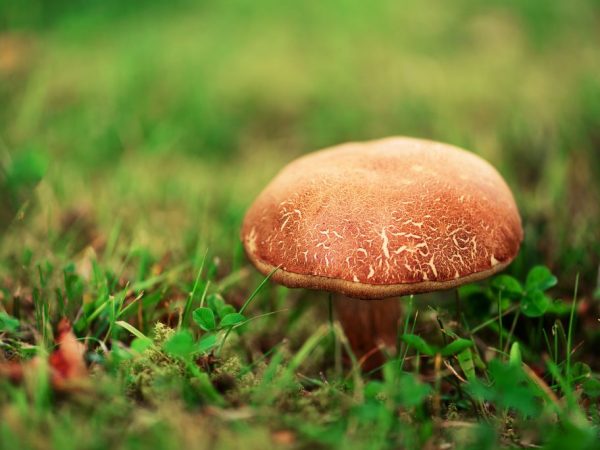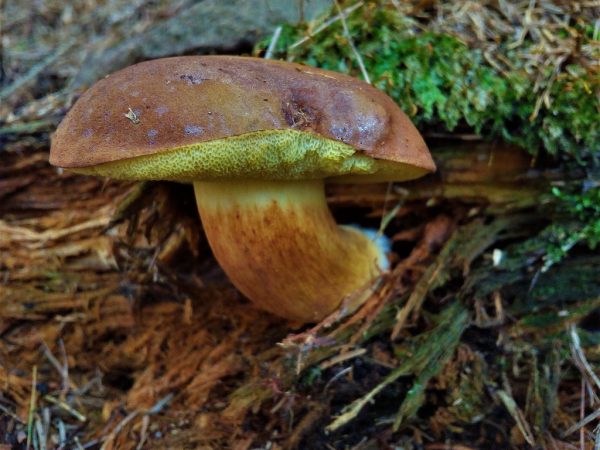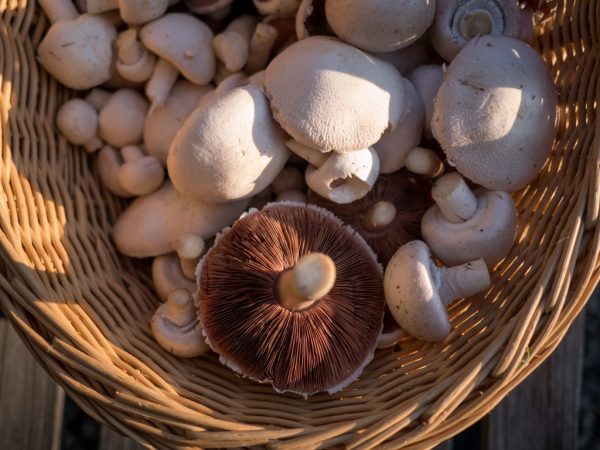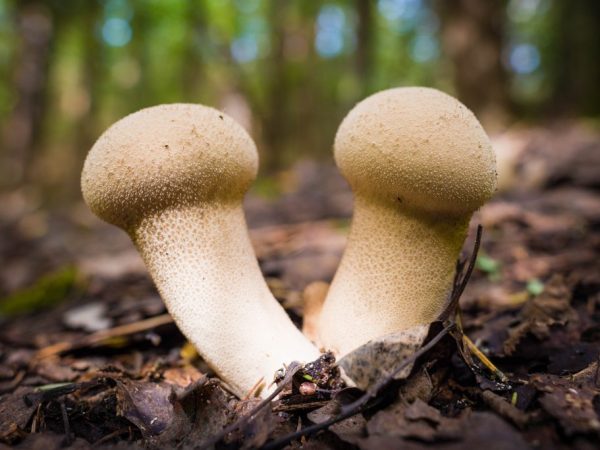Twin mushrooms
During the mushroom picking season, the forest is filled with lovers of "quiet hunting". To do this, a person must be well versed in all the diversity of forest organisms and not confuse twin mushrooms with edible originals.

Twin mushrooms
The main signs
According to their main characteristics, all mushrooms are divided into the following categories:
- Category 1: edible (certainly edible);
- Category 2: conditionally edible;
- Category 3: inedible;
- Category 4: poisonous.
If conditionally edible and inedible ones are processed, soaked and boiled, then some of them (milk mushrooms, mushrooms and morels) are safely allowed to be eaten. Only poisonous species are dangerous, so you need to know the external differences of unsuitable species for food.
There are no signs that clearly identify false mushrooms and the degree of their toxicity. But there are a number of features that are most common:
- the presence of a Volvo;
- lamellar structure of the spore-bearing layer (often), although there are twin species with a spongy hymenophore;
- bitter taste;
- change in the color of the pulp at the break;
- unpleasant odor.
The leg of a poisonous organism often grows from a volva ("pot" or "pouch").
Irina Selyutina (Biologist):
Volvo is the remnants of a blanket, or velum, which protects the young fruiting body (covers it entirely). As the fungus grows, the velum breaks apart and remains in the form of rings and volva at the base of the stem, which is an important systematic feature. A Volvo is also called a vagina. It is in the form of remnants of a membranous wrapper or scraps of different size and shape, located at the base of the leg. When she is characterized, be sure to indicate what she is:
- free;
- adherent to the leg;
- solid;
- looks like scraps, rags;
- sizes.
Let's take a closer look at what edible mushrooms and their counterparts look like.
Differences
All lovers of "forest meat" know the main types of edible mushrooms. In each region of Russia, they are divided according to the seasons. The most popular are the following:
- White;
- Boletus and Boletus boletus;
- Ryzhiki;
- Oil;
- Chanterelles;
- Russula;
- Honey mushrooms;
- Raincoats;
- Champignon.
Almost all of them have their counterparts, which are capable of causing severe poisoning.
Doubles of the porcini mushroom
The porcini mushroom is edible even without heat treatment. It gives spice and special taste to any dish.
Its pulp is distinguished by its tenderness and pleasant aroma.

White mushroom can be eaten raw
It is often confused with Bile and Satanic Mushrooms, which are inedible. The false white mushroom has the following differences:
- the color of the leg (in white it is beige, in the gallbladder there is a dark mesh on the leg, in the satanic one it is very peculiar and brightly colored);
- the color of the cap (white or beige for white, and brown or red for doubles);
- color at the break (white never changes color, and its dangerous counterpart - satanic, turns blue at the break).
Doubles of autumn honey agarics
The family of autumn mushrooms will be able to feed the whole company. These mushrooms grow in large groups in the depths of the forest on stumps and fallen trees. Honey mushrooms are often salted and pickled. Beautiful honey beige hats are eye-catching. The honey agarics have a pleasant aroma. The legs are brown or brown at the base, and white at the top. They are often confused with false "brothers": sulfur yellow and brick red.
The main differences are:
- the hat of the twins is yellow or red;
- plates are sulfur-yellow, greenish or gray;
- there is no ring on the leg.
Before cooking in autumn honey agarics, it is better to remove the ring or leave only the caps. They are the tastiest and healthiest, and there is a lot of chitin in the legs, so they are tougher and less digestible.
Sometimes honey mushrooms are confused with fiber, which grows in deciduous and coniferous forests from the beginning of summer to the end of November.
The main differences of the Fiber:
- unpleasant odor;
- white pulp;
- thin leg;
- leg height up to 5 cm;
- the shape of the cap is conical.
The fiber (also called the cone-like whip) never changes color on the cut. Eating it in food causes serious intestinal poisoning. Only timely medical assistance can save a person.
Champignon doubles
Champignon is confused with white amanita.
The description of the forest mushroom has its own characteristics. Its cap is rounded at the bottom. In a young species, it is attached to the leg with a thin film, after touching it turns yellow. The plates have a pinkish tint, turn brown with age. The leg is dense and has a cylindrical shape. The aroma of the pulp is pleasant, not strong.
Real mushrooms differ from white mushrooms in their caps. They are round only at the top, below they become flat. The aroma is sharp and unpleasant, which is immediately alarming. The white plates are loosely arranged and are pink, like the original. The stem is thin and has a striped ring, which is never found in edible champignons. The base of the leg is widened.
Sometimes champignons are confused with pale toadstool, one of the most dangerous and poisonous mushrooms.
Description of toadstool:
- the color of the cap is pale whitish or pale beige;
- spore-bearing lamellar layer;
- the leg is cylindrical, narrowed to the cap;
- there is a characteristic "skirt" on the leg
- the leg below has a tuberous thickening, immersed in a kind of sac.

Champignons have poisonous counterparts
These mushrooms are so toxic that they can spoil the real edible mushrooms lying in the basket with one touch. The poisonous double affects all organs, often causes death, because poisoning manifests itself at a time when it is almost impossible to help.
A pale toadstool is often confused with a green row. But on closer inspection, you will be able to notice the difference: on the doubles of edible green mushrooms, there is neither a Volvo nor a ring on the leg.
Twins of the blushing fly agaric
Blushing Amanita is considered conditionally edible. It is sometimes confused with champignon. It does not cause such severe poisoning as the poisonous pale toadstool. Some people cook this kind, it is served in expensive restaurants. The danger is some external similarity between the species of blushing and panther fly agaric.
In order not to confuse it with the panther, it is worth understanding the differences.
Description of the panther fly agaric species:
- the hat is greenish-beige;
- spots on the cap are pale, beige;
- the leg is cylindrical;
- there is a thin "skirt" on the leg;
- the color of the pulp is white;
- the color does not change at the break.
In the reddening fly agaric, the pulp turns pink after contact with oxygen. The cap is red with white spots or slightly sticky.
Irina Selyutina (Biologist):
Amanita muscaria gray-pink, or blushing belongs to the category of conditionally edible mushrooms, which are collected mainly only by advanced mushroom pickers. Before cooking, it must be boiled well for 15 minutes in salted water. The taste, according to those who have tasted it, the pulp resembles chicken.It grows in any forest on a wide variety of soils, but prefers lighter areas. Mycelium begins to bear fruit in mid-June and ends somewhere in mid-October.
In addition to the panther fly agaric, it can also be confused with the fat one. However, this species, unlike the panther, is very safe. Their pulp never changes in color upon contact with air.
Amanita muscaria is toxic and, when ingested, causes bouts of anger, visual and auditory hallucinations. If you do not take action, lethargy, coma and death will ensue.
Flywheels and Butters
Butterlets and Mokhoviks are tasty and healthy varieties. They grow in almost all regions of Russia. But they are often confused with a pepper mushroom, which is not poisonous but is not considered edible. Their appearance is similar (the same color and shape of the cap, size and shape of the leg), but the taste and aroma are sharply different.
The main feature of the pepper mushroom is its bitter taste, similar to the taste of pepper, hence the name of the species. It is often dried, ground, used as a seasoning for main dishes, side dishes and salads. This mushroom seasoning can be stored for a long time in a dry and dark place.
Chanterelle and false mushroom
Chanterelles are best collected for cooking or pickling. They grow from summer to mid-autumn. Prefer deciduous or mixed forests. Real chanterelles correspond to the following characteristic:
- the cap of the fruiting body grows together with the stem;
- the shape of the cap is funnel-shaped;
- red color;
- gives off orange milky juice on the cut;
- the plates are thick.
In false chanterelles, the caps are flatter, the edges are straight, and acquire a brown tint when pressed. The juice is whitish. This is the main trick to help distinguish them. From false chanterelles, villagers prepare medicinal tinctures and decoctions, which help in the fight against parasites and their larvae.
Raincoat and false raincoat

Raincoats appear in early spring
In spring, raincoats appear after morels and stitches. They are often found in parks, pastures and forest edges after warm spring rains. There are many varieties of raincoats, but their real fruiting bodies have the following common features:
- height - 7 cm;
- diameter - 6-8 cm;
- the shell of the body is double;
- White color;
- flakes up to 2 mm are present on the surface;
- the pulp has a faint aroma.
When harvesting the first spring harvest, ordinary raincoats are confused with false raincoats. Their growth and development begins underground, at first the mushroom looks like a tuber, which reaches 10 cm in diameter. In the lower part, at the base, a bunch of tapered fibers is noticeable. In the pseudo-raincoat, the shell of the fruiting body is single-layer, dense, there are small scales on the surface. As it ages, its color changes to yellowish or gray-white. Coffee-colored cracks gradually appear.
Poisoning signs and first aid
To prevent poisoning, before going into a deep forest, it is better to refresh your memory of all the main signs of poisonous and edible species. If an accident occurs, knowing the signs of poisoning and first aid actions will help.
Poisoning symptoms:
- nausea;
- vomiting;
- dizziness;
- increased body temperature;
- abdominal pain;
- blue lips;
- cold hands and feet;
- diarrhea.
If fly agarics got into food, then the manifestation of sound and auditory hallucinations is possible. The state is like a sharp insanity of reason. In case of poisoning with false mushrooms, the stomach is immediately washed. To do this, you need to drink at least 1.5 liters of boiled water (or a pale pink solution of potassium permanganate) and then induce vomiting. This procedure will have to be repeated several times. Then you need to lie down and drink plenty of fluids to restore water balance in the body. There is no time to waste, it is important to see a doctor right away. When going into the forest, it is worth remembering the basic rule of the forester: do not put a mushroom in the basket if you are not sure that it is edible.
Conclusion
When harvesting forest crops, it is important to be able to distinguish edible and poisonous species from each other. In order not to be poisoned by false inedible mushrooms, it is better to take into account the advice of experienced mushroom pickers, look through the mushroom guide. It is worth preparing in advance for the event, remembering how certain types look, carefully examining each copy when collecting. Only then will the insidious doubles not be able to get into the basket and spoil the harvested crop. With the right approach, mushroom hunting is sure to bring pleasure and help diversify the menu.


